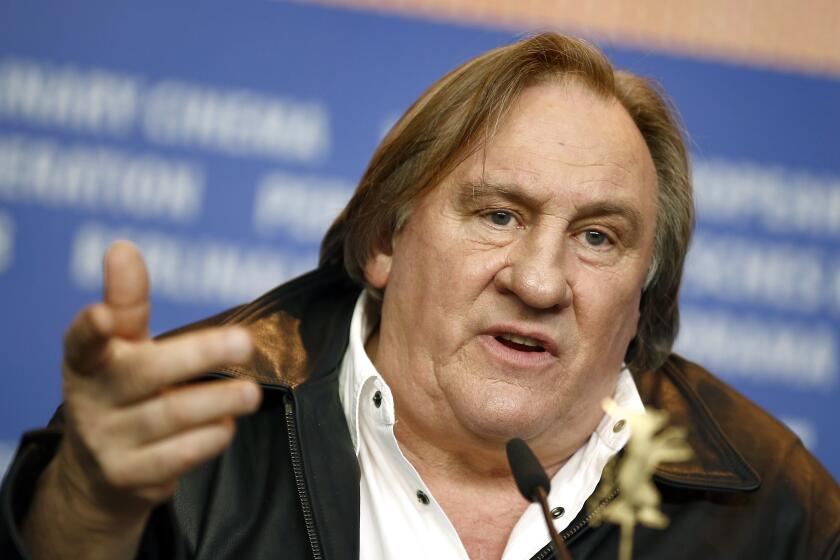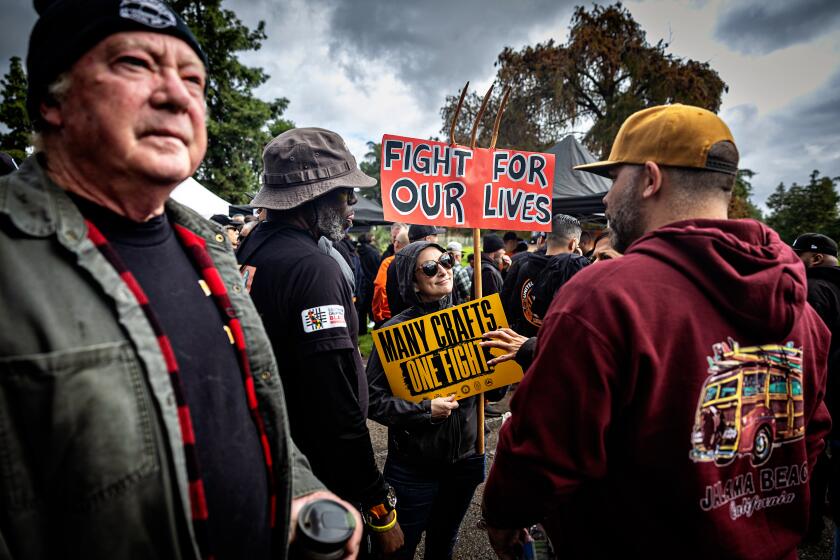L.A. stations won’t hurry signal switch
Angelenos with old analog televisions don’t have to worry about the major networks making an early leap to all-digital broadcasts.
When it approved a four-month delay in the nationwide switch to all-digital transmissions, Congress allowed stations to seek permission from federal regulators to turn off their old analog signals earlier. Hundreds across the country plan to make the switch on the original date, Feb. 17, at least in part to save money.
But Michael J. Copps, acting chairman of the Federal Communications Commission, announced Thursday that the four major broadcast networks -- ABC, CBS, Fox and NBC/Telemundo -- had vowed that their owned-and-operated stations would not switch to digital-only signals until the delayed date.
Their four local stations all fit the bill, which means that the estimated 400,000 households in Los Angeles that aren’t prepared for the digital transition have almost four months to buy a converter box or a digital TV.
The region’s leading PBS affiliate, KCET, also said it would wait until June 12.
Tribune Co. said it was still deciding when to make the switch for its local CW affiliate, KTLA-TV Channel 5, and its 22 other stations. Tribune also owns the Los Angeles Times.
The four major networks own a combined 93 stations nationwide. Other affiliates are independently owned and will make their own decisions about applying to make the digital switch early.
The FCC tried to provide TV viewers and broadcasters with some clarity Thursday about the transition, which has become more confusing because of the pending delay.
People with cable, satellite or phone company TV service don’t have to do anything because those systems already convert the digital signal to be compatible with older analog sets.
Viewers who rely on antennas, however, must obtain either a newer TV with a digital tuner or a converter box available from electronics retailers to see the digital signals.
The FCC announced that stations must notify the FCC by Monday if they wanted to go ahead with their switch on the original Feb. 17 date.
Stations had been preparing for that date all along and face increased costs, including thousands of dollars a month in electricity bills, for continuing to transmit their analog signal along with the new digital one that most already have been airing for months.
So there are strong economic reasons for them to want to shut off their analog transmitters.
PBS estimates that the delay will cost its 356 stations about $22 million. The noncommercial network said Thursday that about half its stations would make the switch Feb. 17.
All told, roughly a quarter of all broadcast TV stations could file to switch to digital-only before June 12, David Rehr, president of the National Assn. of Broadcasters, estimated Thursday. Among them are the 39 stations across the nation owned by Sinclair Broadcasting Group, which intends to switch Feb. 17.
Two other big station owners, Gannett Co. and Hearst-Argyle Television Inc., told the FCC that the vast majority of their stations would wait until June 12, Copps said.
He said the FCC would set a high bar for approving early switches in markets where all stations want to make the transition before June 12. Though the agency may allow individual stations to turn off their analog signals early, Copps is worried that allowing all stations in a region to do so could completely cut off unprepared viewers.
“We reserve the right to deny those requests if we find that it would not serve the public interest or if it would frustrate Congress’ goal of giving consumers adequate time to prepare,” he said.
President Obama, who is expected to sign the delay into law soon, called for a reprieve last month after the government’s converter-box subsidy program ran out of money. Some 3.7 million people remain on the waiting list for $40 coupons.
The Nielsen Co. said Thursday that 5.1% of U.S. households, about 5.8 million homes, were still unprepared for the transition and would lose all access to TV signals if the transition took place now. In Los Angeles, the percentage is higher -- 7.05% of households, or about 402,000 homes.
A patchwork quilt of signals, with some stations broadcasting only in digital and others in both analog and digital, could create headaches for antenna users.
Some older converter boxes don’t have the ability to handle both types of signals, so some viewers would have to unplug the device to watch one channel broadcast in analog, then plug it back in to watch another in digital.
--
--
The Associated Press was used in compiling this report.
More to Read
The biggest entertainment stories
Get our big stories about Hollywood, film, television, music, arts, culture and more right in your inbox as soon as they publish.
You may occasionally receive promotional content from the Los Angeles Times.






